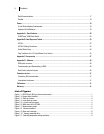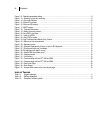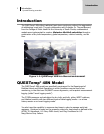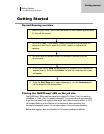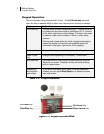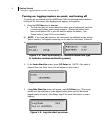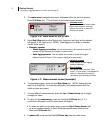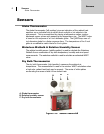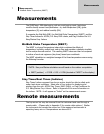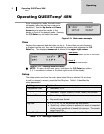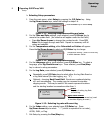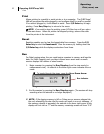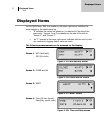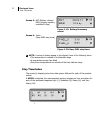
Contents
iii
Figure 1-12: Selecting temperature setting………………………………………………………………………………………. 9
Figure 1-13: Selecting log rate with event log……………………………………………………………………………….. 9
Figure 1-14: Run mode indicator……………………………………………………………………………………………. 10
Figure 1-15: Wet and Dry screen…………………………………………………………………………………………….. 11
Figure 1-16: Globe and RH screen………………………………………………………………………………………….. 11
Figure 1-17: WBGT screen…………………………………………………………………………………………………… 11
Figure 1-18: Time and Date screen…………………………………………………………………………………………. 11
Figure 1-19: Battery & memory screen……………………………………………………………………………………... 12
Figure 1-20: Navy PHEL stay times…………………………………………………………………………………………..12
Figure 1-21: Index for ACGIH………………………………………………………………………………………………... 12
Figure 1-22: Navy PHELs screen…………………………………………………………………………………………….13
Figure 1-23: Flag Conditions Navy/Marine Corp. Ashore………………………………………………………………… 13
Figure 1-24: Main menu with view selected ……………………………………………………………………………….. 15
Figure 1-25: Alignment screen………………………………………………………………………………………………. 15
Figure 1-26: Sunshield & placement of finger cot prior to RH alignment……………………………………………… 15
Figure 1-27: RH alignment with Low % example………………………………………………………………………… 16
Figure 1-28: RH alignment with High% screen…………………………………………………………………………… 16
Figure 1-29: Sample DMS event data report……………………………………………………………………………… 17
Figure 1-30: Sample printouts……………………………………………………………………………………………….. 18
Figure 1-31: 9-volt battery……………………………………………………………………………………………………. 19
Figure 1-33: Communicating with the QT⁰ 48N and DMS……………………………………………………………….. 28
Figure 1-34: Communicating with the QT⁰ 48N and DMS……………………………………………………………….. 29
Figure 1-35: Data Finder Page……………………………………………………………………………………………… 29
Figure 1-36: Quick Report…………………………………………………………………………………………………… 30
Figure 1-37: Analyze button opens to the panel layout page…………………………………………………………… 30
LIST OF TABLES
Table 1-1: Keypad explained ................................................................................................................................... 3
Table 1-2: Settings indentified ................................................................................................................................. 8
Table 1-3: Example of a Memory table .................................................................................................................. 13





